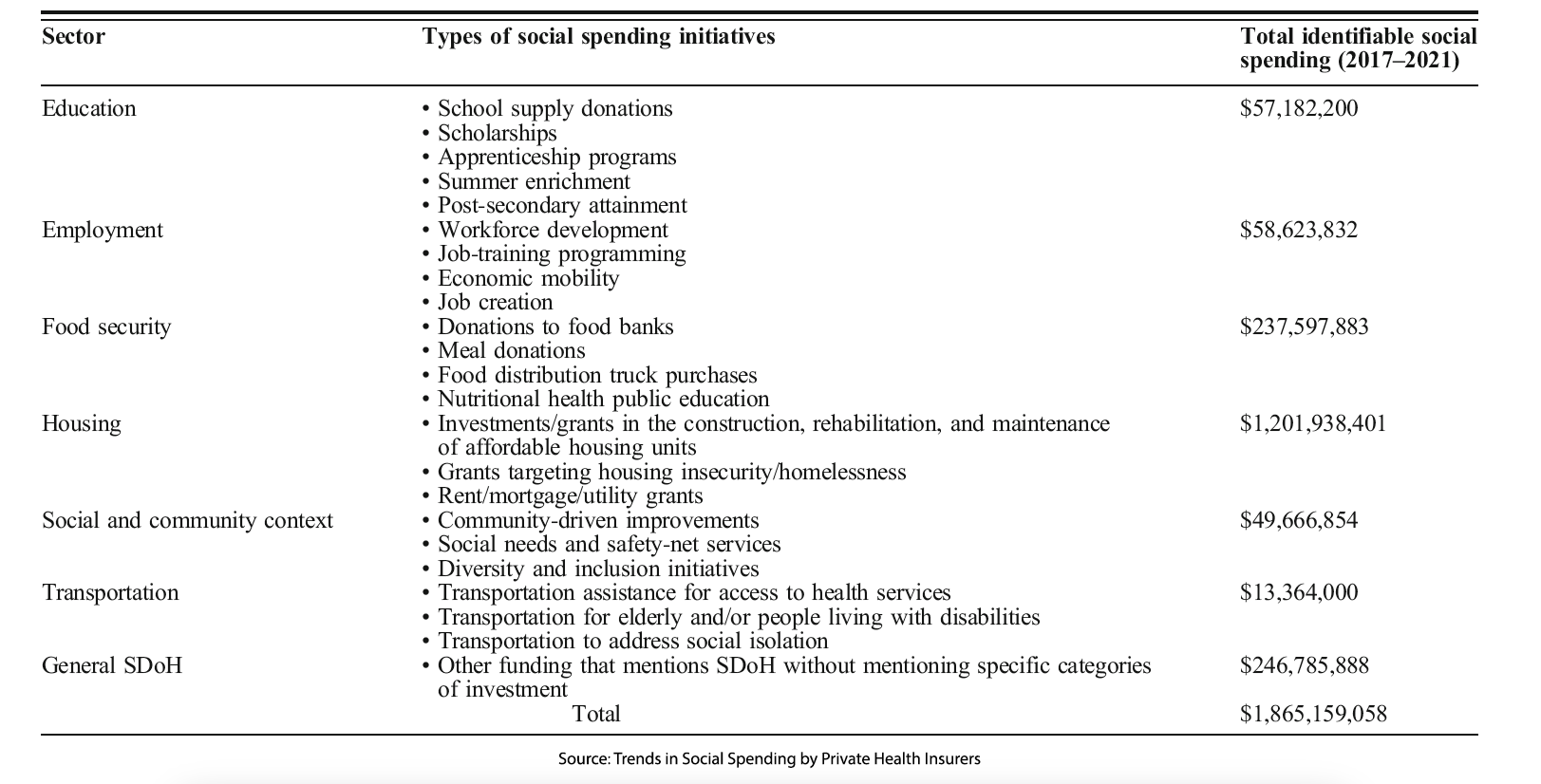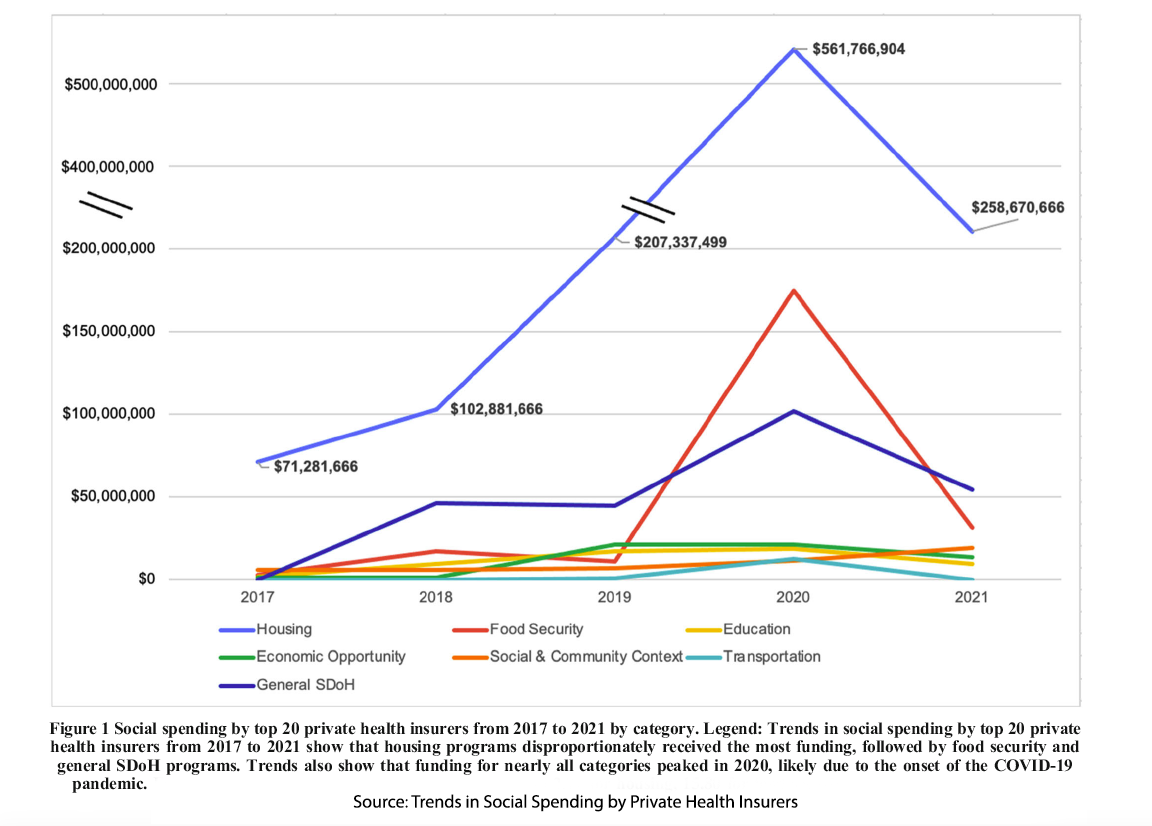The article begins with a bit of hyperbole in explaining the $2.5 billion spent on social determinants of health (SDOH),
"social, economic, and environmental conditions account for 80% of a person’s modifiable contributors to health outcomes."
Of course, if you follow their citation, the actual percentage is 50%, with the other half consisting of “health behaviors, [and] clinical care.” Without access to their dataset, we will never know whether other mathematical errors exist. The dataset reflects the spending by the top 20 US health insurers, reflecting two-thirds of the total market based on information from the National Association of Insurance Commissioners (an association of the chief state regulators of insurance) and publicly available data from corporate reports and news articles. They identified seven categories of social spending.
By far and away, the most significant proportion was spent on housing. For the cynical among us, it would be interesting to know what percentage of that expenditure was an investment rather than grant.
Here is a pretty picture of how that spending changed over the study period, 2017 to 2021.
The spike in 2020 is most likely related to COVID, but overall, spending has increased year-to-year. Insurers spent at least $1.87 billion during that time period. That is a large chunk of change, but if we know the denominator, we might learn a bit more.
The denominator chosen by the researchers was the profit of these insurers in 2020. According to one source, UnitedHealth Care generated $15.4 billion, Cigna $8.5 billion, Humana $4.6 billion, and Anthem a measly $4.1 billion. (Total $32.2 billion). By the researcher’s calculations, spending on SDOH was 1.6% of their profits, which are capped at between 15 and 20% of total premium payments by law.
Undoubtedly, it is a benefit to have some of the excess (profit) of our premiums returned to the community. But we should recognize that the percentage is small, despite the big-sounding numbers – without knowing that even larger-sounding profit, we have a little context for making a judgment. Like those healthcare non-profits, their spending on these issues is not as significant as you are led to believe.
And one last question, are the health insurers the best to determine how those monies will be distributed? Is the government better? Or should those excess premiums be returned to us?
Source: Trends in Social Spending by Private Health Insurers Journal General Internal Medicine
DOI: 10.1007/s11606-022-07878-7






